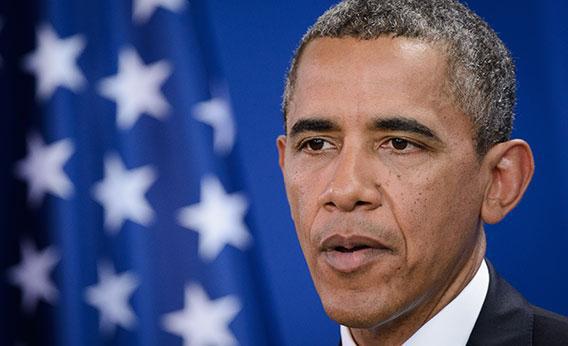We don’t yet know the content of Barack Obama’s climate-change policy speech set for Tuesday, but the centerpiece is sure to be Environmental Protection Agency regulation of greenhouse-gas emissions from existing power plants. [Update, June 25, 2013: Read the White House’s fact sheet on the plan here.] Curbs on existing plant emissions have been in the making since 2007, when the Supreme Court held in Massachusetts v. Environmental Protection Agency that the EPA is required under the Clean Air Act to regulate carbon dioxide. The Bush administration, naturally, dragged its feet across the board on this subject. By contrast, the Obama administration has acted fairly aggressively under Clean Air Act authority to regulate new power plants and to raise emissions standards for cars and trucks. But regulation of existing plants is a much bigger deal, both ecologically and economically. And the issue is a potent reminder that, politically unrealistic as it may be, Congress ought to step up to the plate and pass a climate bill.
In the real world, we know that whatever Obama says, Republicans will denounce it as job-killing overreach. But if they could take a deep breath and consider the national interest for a moment, they’d see that the best cure for the very real flaws in EPA regulation is comprehensive climate legislation featuring cap-and-trade or a carbon tax.
Back in the winter of 2008–09, environmentalists and members of the Obama transition team never would have imagined aggressive use of Clean Air Act regulation as the centerpiece of their climate-change policy—for the very good reason that it’s a bad way to make climate-change policy. The idea, instead, was that the threat of EPA regulation would bring stakeholders to the table and lay the groundwork for a comprehensive bill. The exact same logic pertains today.
The basic problem with the EPA approach is that any new rules that will have a meaningful environmental impact—rules that would require existing coal-fired plants to shut down or curtail their operations—are going to have large financial costs. And those costs will not be borne evenly. Some parts of the country have a much more coal-based power grid than others and will see disproportionately higher prices. Manufacturing firms that use a lot of electricity face the risk that pollution will be essentially “outsourced” to less regulated countries. Most of all, higher electricity prices affect different households very differently.
According to the Consumer Expenditure Survey, the poorest one-fifth of households spends about half as much per year on electricity as the richest one-fifth of households. But that richest one-fifth earns about 15 times more money and spends four to five times as much on an annual basis. For regulations to have a big impact they’ll need to shut down some of the dirtiest plants and at least temporarily increase electricity prices—a move that will have a much harsher impact on the poor, the Southeast, and the Midwest than on prosperous people on the low-carbon West Coast.
The good news is that a sensible climate-change policy can curb emissions while blunting the negative impact on poor people and carbon-intensive regions. According to government regulators, the aggregate “social cost” of carbon emissions—the best guess as to the price of the currently unpriced negative environmental impacts—is about $36 per ton of CO2. Addressing that social cost with a $36-per-ton tax or a similarly priced CO2 cap-and-trade system would impose large costs on coal and oil producers and ratepayers in coal-intensive areas. But it would also generate a large pot of revenue. That revenue could, in turn, be used to offset the negative impacts. Low-income households could benefit from lower taxes, a more generous Earned Income Tax Credit, or a special “carbon dividend” of some kind. Coal-heavy regions of the United States could receive targeted investments in energy efficiency or clean energy generation. With taxes pegged to the scale of environmental impacts, curbing pollution becomes a win-win for the economy.
But the EPA can’t impose a tax or auction pollution permits. The only way it can cushion the blow of tough regulations is to make the regulations less ambitious, aiming for lower emissions reduction or a slower pace of reductions. Yet that would be a mistake—allowing air pollution to continue unabated is much worse for the economic long-term than the short-term pain of higher electricity prices.
The right solution here is still what it was when Obama was first elected. Republicans ought to suck it up and recognize that a real legislative framework for tackling climate change is better than an ad hoc, executive-branch response. All the interests, regions, and industries harmed by a carbon tax or cap-and-trade system are going to be harmed even more by an all-regulation effort—you get the costs of reduced fossil-fuel use without the revenue that can mitigate those costs. The upside to sticking with the Clean Air Act framework is that it gives Republicans an issue: People will feel pain if electricity becomes more expensive, and they can point the finger at Obama and the Democrats. But while this sort of partisan war may have made some sense in the president’s first term, by now it’s surely time to give up the ghost. The kind of electoral total victory it would require to partially repeal the Clean Air Act is extraordinarily unlikely. There are serious problems with the path of unleashing the EPA on existing power plants, and if the GOP actually cares about making the situation better, they’ll do what they should have done years ago and come to the table with a serious alternative proposal.
